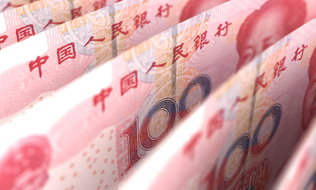

Even amid the global chaos created by the coronavirus pandemic, China is too big an economy for institutional investors to ignore.
A recent report by Greenwich Associates found the two main drivers for China allocations among institutional investors are diversification (54 per cent) and potential for alpha (31 per cent).
But just as markets in Europe and North America saw historical price movements — bond yields shooting up just as equity markets took eye-popping drops — China saw a dramatic dash for U.S. cash in a way it never has before, says Robert Horrocks, chief investment officer at Matthews Asia. Other emerging markets, such as India and Indonesia, also rushed to position themselves into U.S. cash.
Read: Why pension funds should have boots on the ground globally
That situation, while unprecedented, was solved in a matter of days through swift action from the U.S. Federal Reserve, he says. “If you’ve got everybody rushing into U.S. dollars and you feel there is an infinite demand, what you do is you get somebody — and there’s only one thing that can do this and that’s the Fed — to get up there and say, ‘Well, we’ll create an infinite supply. And we stand ready to have unlimited quantitative easing to get rid of this problem.'”
Now China, along with every other country, has entered that stage where reactions from politicians and the amount of stimulus they’re willing and able to provide, as well as the overall impact of the virus on economic activities, will determine the ultimate damage, says Horrocks.
Overall, China saw far less impact on its economy from the virus than other global economies, especially Europe, he adds. And the relative speed with which China has pushed forward the stabilization of its economy strengthens the argument that it could emerge from this crisis as one of the world’s two economic powerhouses, with the other being the U.S. “We might be moving to a world with two investment poles, one in the U.S. and one in China.”
Read: Will emerging Asia outperform against an improving global backdrop?
In such a world, Horrocks notes the reasons for institutional investors to have a dedicated investment to China are piling higher. But with markets in turmoil, when will investors feel comfortable dipping their toes back into new allocations?
“There are buying opportunities out there,” he says. “But the way we’re looking at this is, rather than trying to get the timing right, we’re saying, do you see quality businesses whose share prices have been hit hard where people have been reluctant to make any moves, because they’re worried about, ‘Am I going to pick the bottom or not?'”
If an investor can look at a business and assume earnings for 2020 are simply out the window, but would start to get back to normal in 2021 with improved conditions, the questions become whether its attractively valued, says Horrocks. “There are a lot of business that were looking pretty expensive before, where you’re now getting pretty reasonable prices.”
Read: Tech, health care set to be winning sectors for institutional investors during, after pandemic
